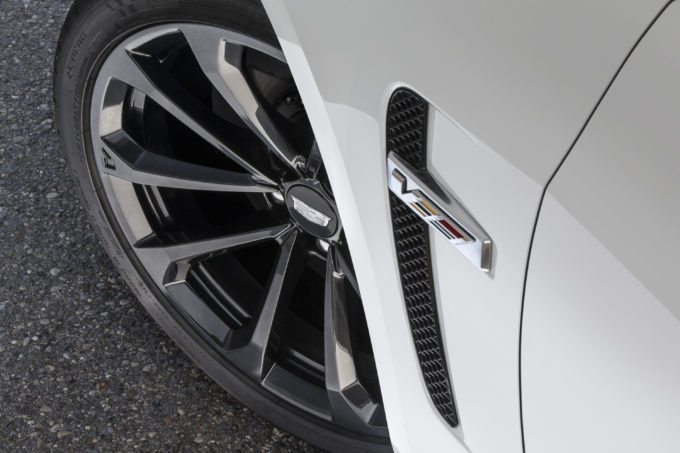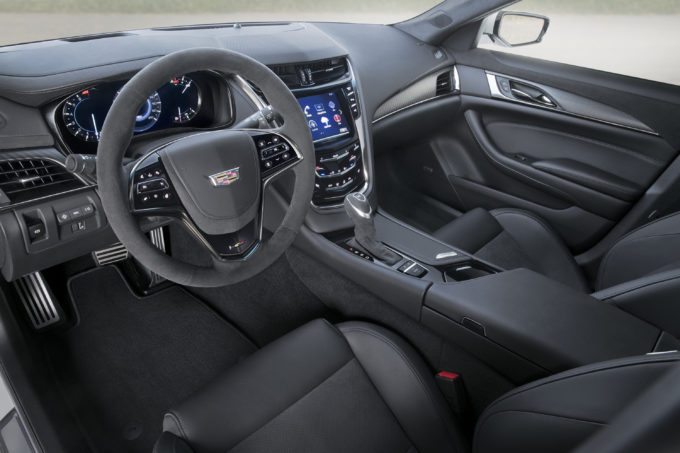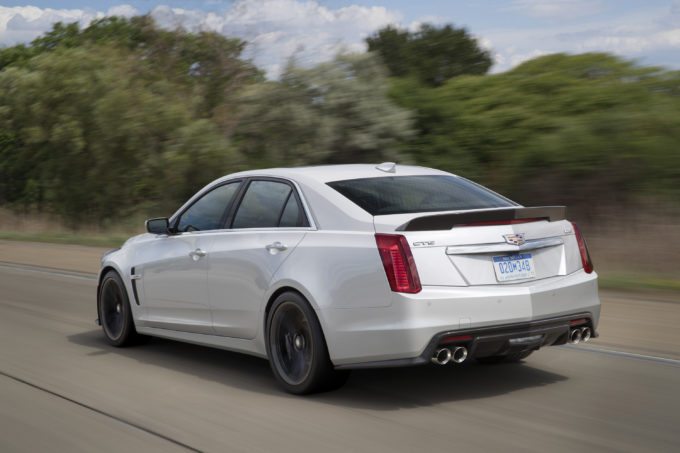In the past two months we have been host to Cadillac’s latest sedans: the nimble ATS-V and the plush CT6. But they saved the best for last: the third generation CTS-V. What began as a low volume project in 2004, the CTS-V is not just a Corvette engine swap. Aside from borrowing the power from Chevrolet’s top model, the V has been forged through extensive testing at the world’s greatest race tracks.

First generation cars were built from 2004 to 2007 with the 405 hp LS6 from the C5 Z06. It was a slap in the face to conventional Cadillac notions of civility. Tuned on the ‘Ring, the suspension featured Sachs shock absorbers and Brembo brakes. No automatic transmission was available, and the six-speed manual offered triple cone synchros in all forward gears.

After a brief hiatus during the body style change, the V returned in 2009 with a detuned version of the ZR1’s 6.2L supercharged V8. At the time GM didn’t have an automatic capable of handling the full power of the Corvette’s 638 hp, so a smaller camshaft and supercharger limited output to 556 hp. A six-speed automatic joined the lineup and quickly surpassed the manual in popularity. CTS-V was also offered in coupé and wagon body styles with production lasting until late 2015.

Dodge shocked the world by installing the 707 hp V8 from the Challenger Hellcat into the Charger sedan, but putting that power to the ground has been an issue. For the 3rd generation CTS-V makes 640 hp and 630 lb-ft of torque, and it arrives with an 8-speed transmission as the only option. Riding on Michelin Pilot Super Sports, the rear tires measure in at 295/30/19. The Hellcat makes more on paper, but we had a hard time keeping the 275 rear tires from spinning.

Technology can make or break the ride quality in modern super sedans, so Cadillac’s V series engineers endowed the car with the latest in magnetic suspension and an electronic rear differential. By trying out the various suspension modes you can feel the rear helping you rotate through a corner, or simply exiting stage left for a proper drift. First and second generation V models are known for heavy steering, but GM has touted this new rack as the most advanced electric assist on the market.

On most press cars we can find quirks and oversights within the first few minutes, but the new V is a solid design inside and out. We don’t often experience sedans with the ability to seat four large adults comfortably. Every office should have a CTS-V as the official lunch run conveyance. Because frightening acceleration does wonders for digestion. Engineers benchmarked the Ferrari 458 Italia for throttle response, and this car delivers. We only wish the active exhaust would stay open 24/7, because the soundtrack is addictive.

Accordingly, the price has jumped to $83,995, and the necessary options such as Recaro seats, performance data recorder push the price just over the century mark. Buyers have not been deterred, as all 2016 examples were sold before August, with a back order extending into the second quarter of ’17. While the second generation CTS-V answered everyone’s questions with polite references to its abilities, the new V is automotive equivalent of a Mic Drop.






